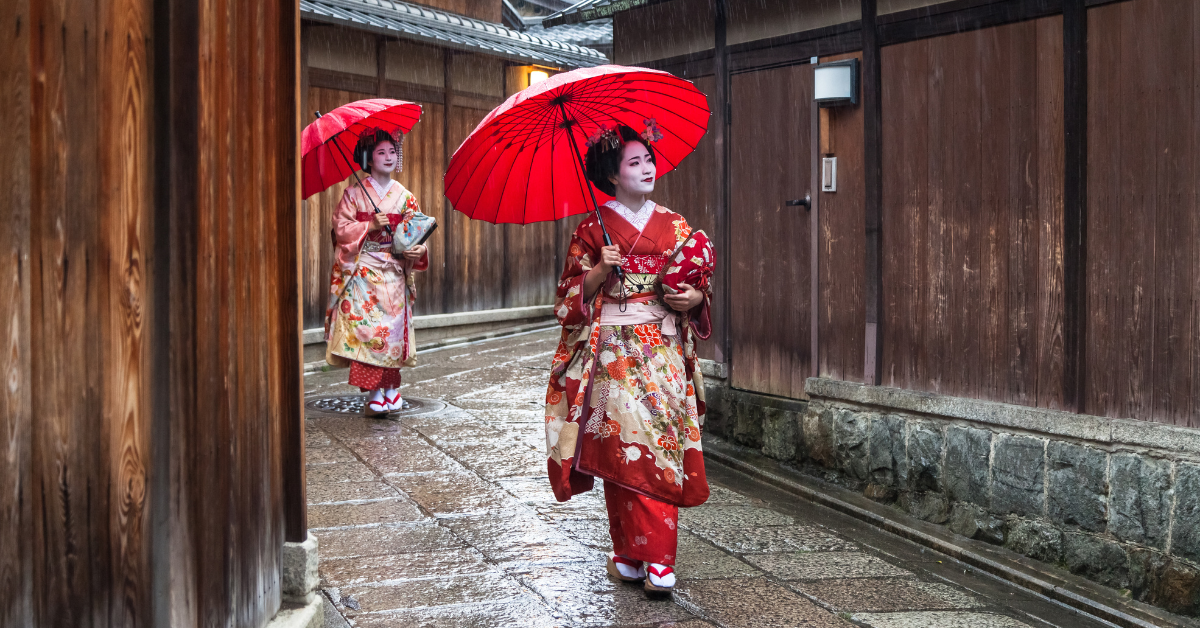Geisha are one of the most iconic figures of Japan, admired for their grace, artistry, and cultural significance. They are not courtesans but skilled entertainers who dedicate their lives to mastering dance, music, and refined hospitality. Through their presence, visitors can experience the essence of Japanese aesthetics and tradition.
What Is a Geisha
The word geisha literally means “a person of the arts” and refers to women who master traditional performance skills such as dance, shamisen, and singing. Abroad, they are written as “Geisha” and recognized as cultural icons of Japan.
It is important to clarify that geisha are not prostitutes or courtesans, but professional entertainers who bring joy through traditional arts. At banquets, they perform dances and music, but equally important is their ability to create a refined atmosphere through conversation and etiquette. Geisha embody the sophistication of Japanese culture and leave a deep impression on those who encounter them.
The History of Geisha
The origins of geisha go back to the Edo period (1603–1868). At first, men dominated the role, but by the mid-18th century, women became the main practitioners, forming the image that continues today. Geisha played an essential part in teahouses and pleasure districts, enlivening banquets and supporting the social culture of the upper classes.
During the Meiji era (1868–1912), as Western culture rapidly entered Japan, geisha gained renewed attention as symbols of authentic Japanese hospitality. While the number of geisha declined in the Showa era due to the diversification of entertainment, they remained significant as tourist attractions and cultural representatives.
| Era | Characteristics of Geisha | Social Position |
|---|---|---|
| Edo | Shift from men to women | Banquet entertainers |
| Meiji | Re-evaluated amid Westernization | Symbol of Japanese hospitality |
| Showa | Decline due to diverse amusements | Cultural tourism resource |
| Modern | Cultural inheritors | Ambassadors of international exchange |
The Roles and Skills of Geisha
A geisha’s role goes beyond artistic performance. They must master the art of conversation, etiquette, and creating a pleasant atmosphere, adjusting their presence according to the needs of their guests.
Their training covers a wide range of skills: traditional dance, shamisen, singing, drums, tea ceremony, poetry, and more. Thus, geisha are not just performers but comprehensive transmitters of Japanese culture.
| Skill Type | Content | Significance for Geisha |
|---|---|---|
| Dance | Japanese classical dance | Expresses culture visually |
| Shamisen & Song | Music and singing | Conveys Japanese identity through sound |
| Tea ceremony & Poetry | Cultural refinement | Enhances dignity and status |
| Conversation | Adapting words to guests | Harmonizes the entire banquet |
Differences Between Geisha and Maiko
Maiko are apprentices on the path to becoming geisha, and their youth and vibrant appearance are defining features. Geisha, on the other hand, embody maturity and refinement.
| Category | Maiko | Geisha |
|---|---|---|
| Age | Late teens | 20s and older |
| Attire | Brightly colored long-sleeved kimono | Formal black kimono |
| Hairstyle | Own hair styled traditionally | Often uses wigs |
| Role | Still in training | Performs as a professional |
Together, maiko bring vibrancy while geisha embody grace, ensuring that Japanese entertainment culture has both liveliness and depth.
Regional Variations in Geisha Culture
Geisha culture varies by region, with Kyoto, Tokyo, and Kanazawa being the most famous centers.
| Region | Characteristics | Impression for Visitors |
|---|---|---|
| Kyoto (Gion) | Strong maiko tradition | Colorful and traditional |
| Tokyo (Shinbashi) | Blends modern with traditional | Urban sophistication |
| Kanazawa | Geisha active in teahouse districts | Quiet and nostalgic charm |
Kyoto’s maiko are iconic for tourism, Tokyo emphasizes refinement and modernity, while Kanazawa highlights serene teahouse culture. These regional differences reflect the diversity of Japanese tradition.
The Training Process of a Geisha
Becoming a geisha requires years of training. A girl starts as a novice, progresses as a maiko, and eventually becomes a geisha. This process is not only about acquiring technical skills but also about learning etiquette, discipline, and the mindset of a cultural custodian.
| Stage | Training Focus | Skills Acquired |
|---|---|---|
| Novice | Learning basic manners | Social etiquette |
| Maiko | Dance and shamisen | Technical skills and youthful charm |
| Geisha | Independent at banquets | Mastery of arts and hospitality |
Through this journey, geisha evolve into cultural inheritors, not merely entertainers.
The Role of Geisha in Modern Society
In modern Japan, geisha remain cultural ambassadors bridging Japan and the world. They appear in tourist performances, international events, and even local festivals, presenting the beauty of Japan to a global audience.
Although the number of geisha has declined, efforts to train younger generations continue. Geisha also participate in schools and cultural programs, helping children learn about traditional arts.
| Modern Role | Examples | Social Significance |
|---|---|---|
| Tourism | Performances and events | Introduce Japanese culture to foreigners |
| Education | School workshops and lessons | Passing tradition to the next generation |
| Regional Revitalization | Local festivals and cultural events | Sustaining local identity and pride |
Conclusion
Geisha embody Japan’s traditional culture, enchanting audiences through music, dance, and refined hospitality. The journey from maiko to geisha reflects the depth of Japanese aesthetics and values.
Understanding geisha means understanding Japan itself: its sense of beauty, its way of human interaction, and its dedication to cultural continuity. Maiko symbolize youthful vibrancy, geisha represent maturity and elegance, and together they preserve tradition while adapting to modern society. For foreigners, learning about geisha provides a gateway to appreciating the essence of Japanese culture.






